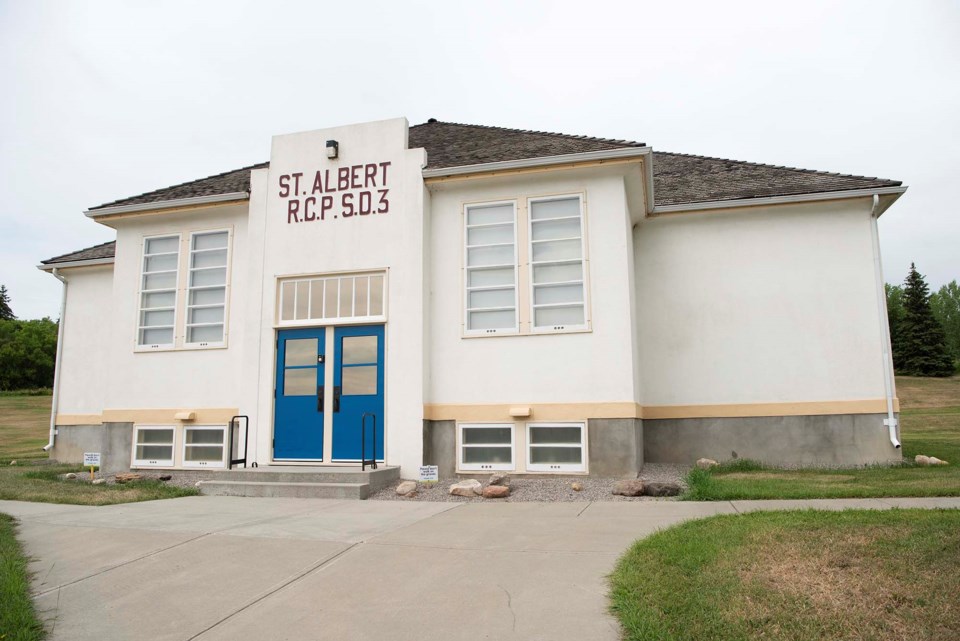St. Albert’s Little White School will get a touch-up this summer now the province has come up with some cash to fix it.
Alberta Arts, Culture, and Status of Women Minister Tanya Fir announced $1.7 million in grants July 10 through the Heritage Preservation Partnership Program. The grants, of which there were 85 this round, support historic and heritage sites across the province.
“These investments in our heritage will not only deepen our understanding of our shared identity, but help tell our stories for generations to come,” Fir said in a media release.
Three of these grants went to St. Albert and Sturgeon County.
Two for St. Albert
The Arts and Heritage Foundation of St. Albert got $5,505 to repair the fasciae (the boards along the edge of the roof) of the Little White School on Madonna Dr.
Ann Ramsden, executive director for the foundation, said these repairs will replace rotten bits of wood in the fasciae. The boards will be repainted with linseed oil paint, which is ideal for conservation work as it penetrates deep into wood and does not crack or peel. The school will be open for tours during the repairs.
The foundation also got a retroactive $12,127 grant to pay for last year’s repairs to the west drive shed ramp and that ramp’s concrete footings at the St. Albert grain elevators, Ramsden said. Crews are now preparing to put a fresh coat of paint on the silver-coloured grain elevator, and will be doing some test paints on its south side this summer.
Ramsden said these grants helped the foundation offset the often expensive maintenance of St. Albert’s historic buildings.
One for Rivière Qui Barre
The Rivière Qui Barre Agricultural Society got a retroactive $10,000 grant to help publish a new community history book that covers 1873 to 2022.
Rivière Qui Barre last published a history book, The Wheels of Time, in 1978, said Monique Webb, Sturgeon County resident and co-ordinator of the ag society’s history book project. The book was extremely popular but long out of print (although it is available online through the University of Calgary).
Instead of just reprinting the book, Webb said the ag society decided to update it. After about a year of work, the society was able to print and distribute 387 copies of The Wheels of Time Vol. 2 last April.
The new book features about 300 family profiles and information on local sports teams, clubs, volunteers, Alexander First Nation, and the COVID-19 pandemic, Webb said. It also has an updated explanation of how Rivière Qui Barre got its name.
“The original interpretation of the name came from a report made by [surveyor] George A. Simpson,” she said.
When Simpson was in the area now known as Rivière Qui Barre, Webb said he asked a local scout for the region’s name. The scout said it was “kipohtakaw,” a Cree word that roughly translates as “an area surrounded by trees.”
“When he gave him that Cree word, Simpson thought [the scout] was gesturing to the river,” Webb said, so he misinterpreted it as “rivière qui barre” or “the river that blocks the way.”
Webb said local history books such as this one are important, as they show future generations the details of everyday life outside of major historic events.
“If we don’t work together to preserve our history with the support of government, then we won’t have [a history],” she said.
Webb said The Wheels of Time Vol. 2 is currently sold out, but a second printing is in the works. Copies of the book are also available at Camilla School and the Morinville and St. Albert museums. Questions on the book should go to [email protected].




